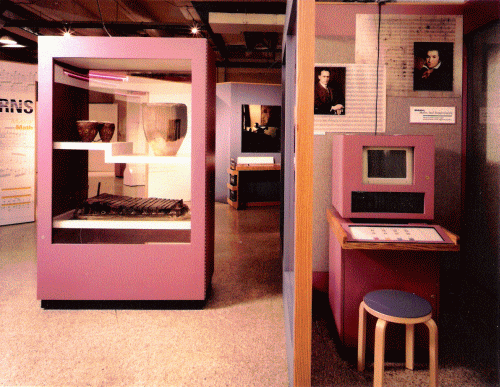What Makes Music?
Exhibit Overview
A traveling multi-component interactive exhibit on the science of music that opened in the summer of 1988. This 4,000 sq. ft. exhibit was seen by over 3 million people, and grossed over $1 million in revenue between 1988-2000. It is the Franklin Institute’s most successful traveling exhibition to date.
HIT A HIGH NOTE!
Using state-of-the-art technologies such as synthesizers, sampling keyboards, computers, spectrum analyzers, and videodiscs, WHAT MAKES MUSIC? examines the relationships between science and music.
Twenty-eight hands-on exhibits use instruments from as simple as a strong, to as complex as a synthesizer; from as familiar as your own voice to as foreign as an African lyre. The exhibit also features sixteen ethnic world-instruments from the Lucy Wharton Drexel collection, the Sound Stage–a demonstration area, and the Giant Walk-On Keyboard (from the hit movie BIG).
The exhibit consists of five main areas:
- Waves: Shapes and Sounds
- Harmonics: Colors of Sound
- Patterns: Musical Math
- Making Music: Acoustic Sounds
- Making Music: Electronic Sounds
“If a man loses pace with his companions, perhaps it is because he hears a different drummer. Let him step to the music which he hears, however measured, or far away.” ~ Henry David Thoreau
A video overview of the exhibit.
Explore the relation between length and pitch.
Discover the harmonic series, and the basic chords that make up a musical phrase.
Listen to ethnic musical instruments from around the world, and explore how
musical patterns have mathematical relationships.
The Sound Stage demonstration area featured as state-of-the-art Kurzweil K250
synthesizer that was originally demonstrated by Robert Moog at the Franklin
Institute during the summer of 1988.



